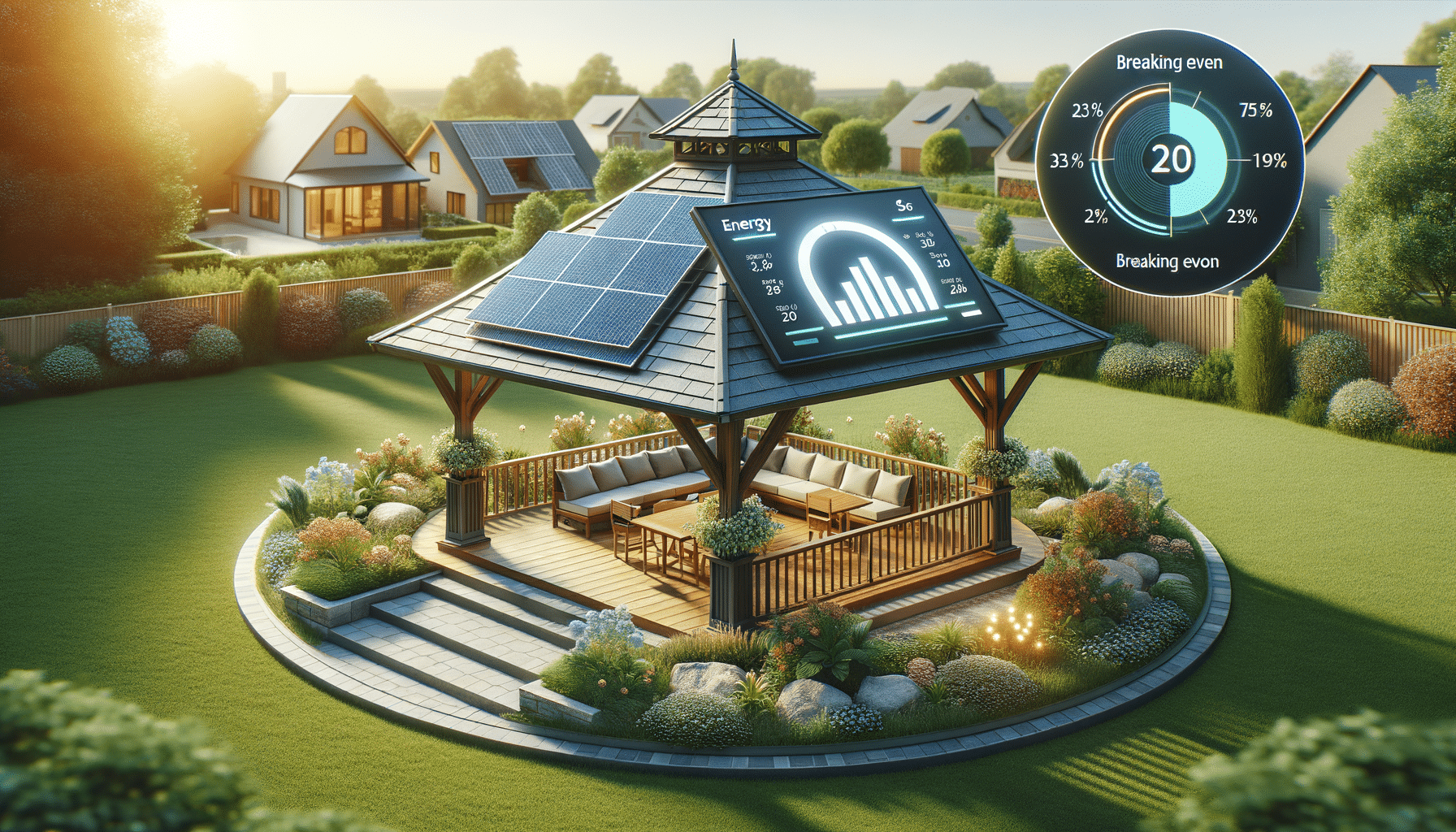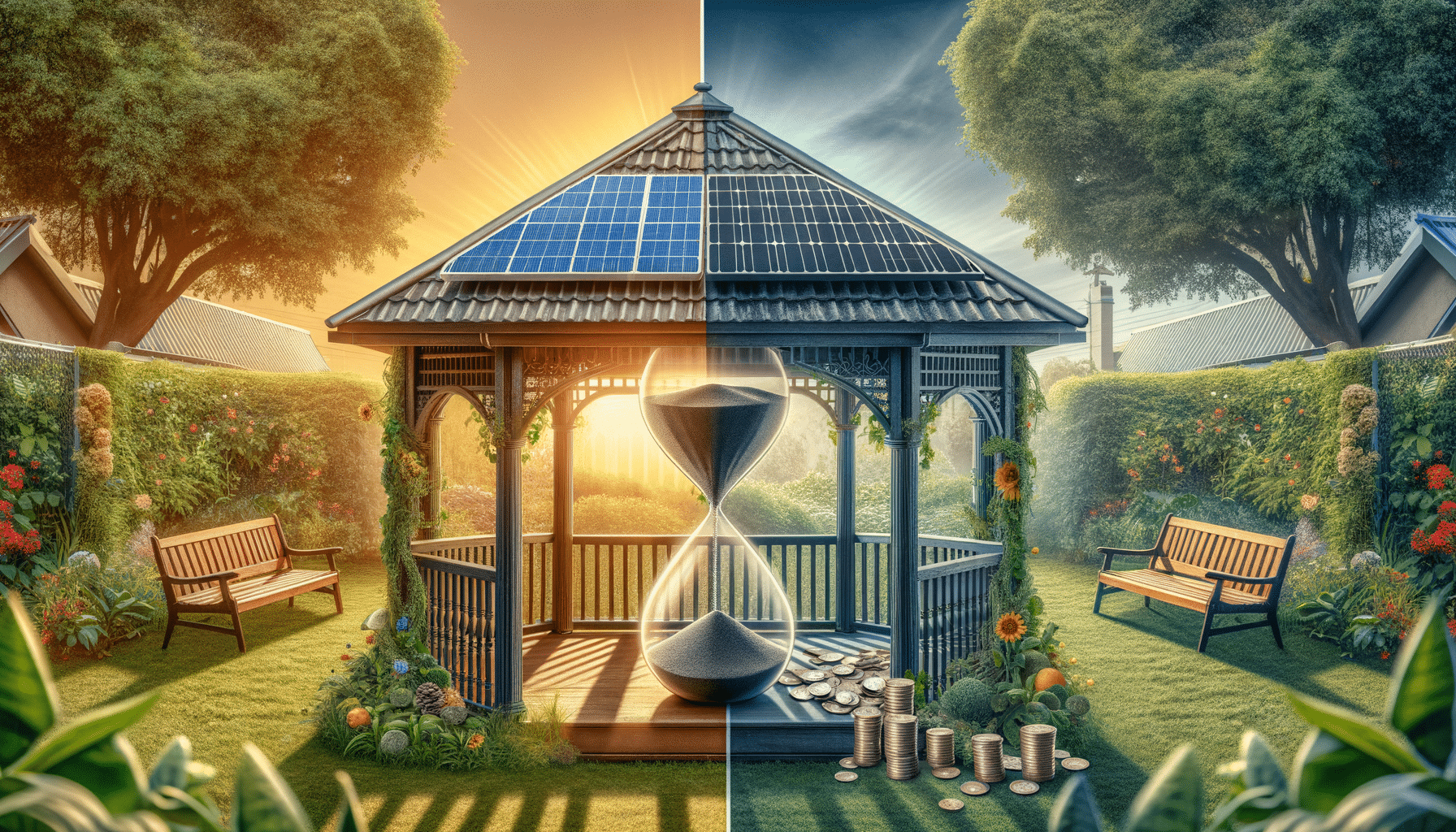
How Many Months Before a Solar Gazebo Covers Its Cost?
Introduction to Solar Gazebos
In recent years, the integration of sustainable energy solutions into everyday living spaces has gained significant traction. Among these innovations, the solar gazebo stands out as a versatile and eco-friendly addition to any outdoor area. Not only does it provide a shaded retreat, but it also harnesses the power of the sun to generate electricity. This dual functionality makes it an attractive option for homeowners looking to reduce their carbon footprint while enjoying the outdoors. But how long does it take for a solar gazebo to pay for itself? This article delves into the costs and benefits associated with solar gazebos, providing insights into their financial viability.
Understanding the Initial Investment
The initial cost of a solar gazebo can vary widely depending on several factors, including size, design, and the quality of solar panels used. On average, prices range from a few thousand dollars for a basic setup to upwards of $10,000 for more elaborate designs with high-efficiency panels. When considering this investment, it’s important to factor in the potential savings on electricity bills, as well as any available tax incentives or rebates for solar installations.
Key considerations when calculating the initial investment include:
- The cost of materials and construction
- Installation fees
- Permitting and inspection costs
- Potential upgrades or customizations
While the upfront cost may seem substantial, the long-term benefits often outweigh the initial expenditure, especially when considering the rising costs of traditional energy sources.
Monthly Savings and Energy Production
One of the main advantages of a solar gazebo is its ability to generate electricity, which can significantly reduce monthly utility bills. The amount of energy produced depends on several factors, including the size of the solar array, local climate conditions, and the amount of sunlight received throughout the year. On average, a well-positioned solar gazebo can produce enough electricity to power small household appliances or contribute to the overall energy needs of a home.
Monthly savings can vary, but homeowners typically see a reduction in electricity costs within the first few months of installation. These savings, when accumulated over time, can contribute significantly to offsetting the initial investment cost.
Environmental Impact and Sustainability
Beyond financial savings, solar gazebos offer considerable environmental benefits. By generating clean, renewable energy, they help reduce reliance on fossil fuels, thus lowering greenhouse gas emissions. This not only contributes to a healthier planet but also aligns with global efforts to combat climate change.
Moreover, solar gazebos often utilize sustainable materials in their construction, further enhancing their eco-friendly appeal. This commitment to sustainability makes them an excellent choice for environmentally conscious homeowners looking to make a positive impact.
Calculating the Payback Period
Determining how many months it will take for a solar gazebo to cover its cost involves calculating the payback period. This is achieved by dividing the total initial investment by the monthly savings on electricity bills. For example, if a solar gazebo costs $8,000 and saves $80 per month on energy bills, the payback period would be approximately 100 months, or a little over eight years.
It’s important to note that this calculation does not account for potential increases in electricity rates, which could shorten the payback period. Additionally, any government incentives or rebates received can further reduce the time it takes to recoup the initial investment.


